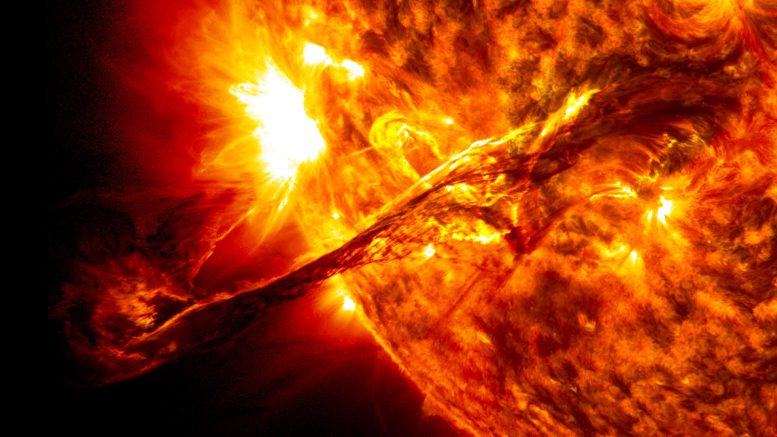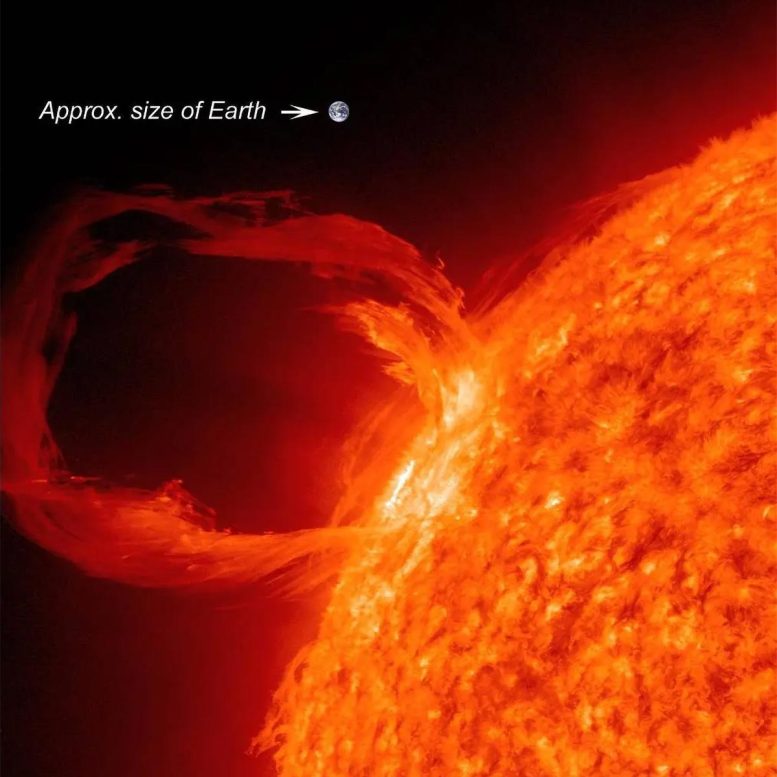

On August 31, 2012, a giant prominence on the sun erupted, sending out particles and a shock wave that traveled near Earth. This image of the prominence before it erupted was captured by NASA’s Solar Dynamics Observatory (SDO). Credit: NASA/SDO/AIA/Goddard Space Flight Center
What Is a Solar Prominence?
Solar prominences are bright, extensive features emanating from the Sun’s surface, extending into the corona and lasting up to several months.
A solar prominence (also known as a filament when viewed against the solar disk) is a large, bright feature extending outward from the Sun’s surface. Prominences are anchored to the Sun’s surface in the photosphere, and extend outwards into the Sun’s hot outer atmosphere, called the corona. A prominence forms over timescales of about a day, and stable prominences may persist in the corona for several months, looping hundreds of thousands of miles into space. Scientists are still researching how and why prominences are formed.


A solar eruptive prominence as seen in extreme UV light on March 30, 2010, with Earth superimposed for a sense of scale. Credit: NASA/SDO
The red-glowing looped material is plasma, a hot gas comprised of electrically charged hydrogen and helium. The prominence plasma flows along a tangled and twisted structure of magnetic fields generated by the sun’s internal dynamo. An erupting prominence occurs when such a structure becomes unstable and bursts outward, releasing the plasma.
